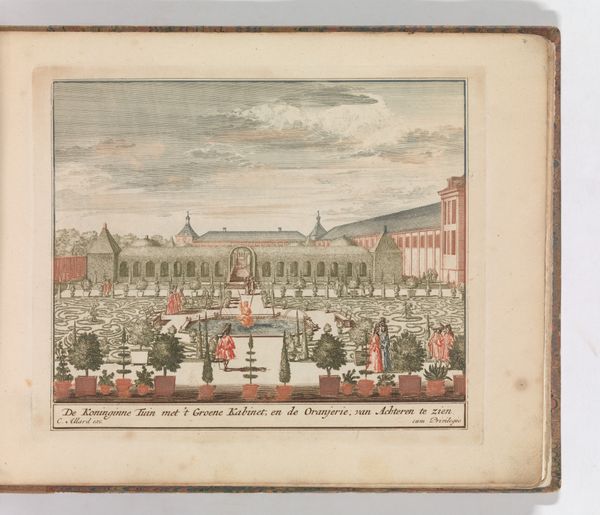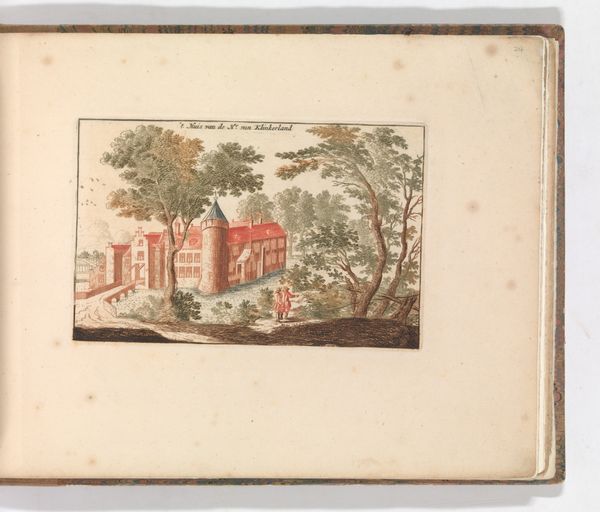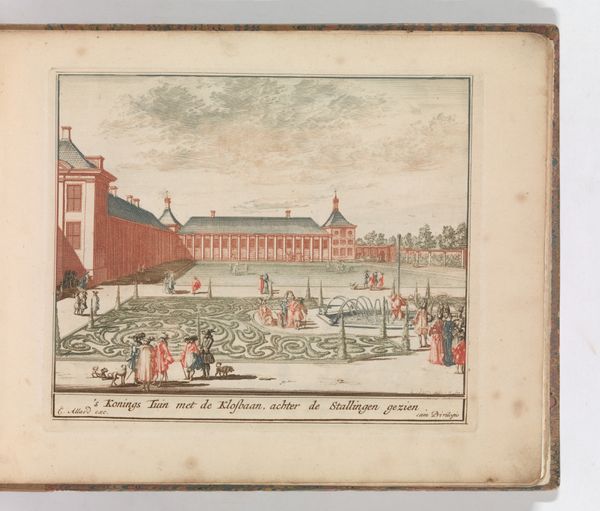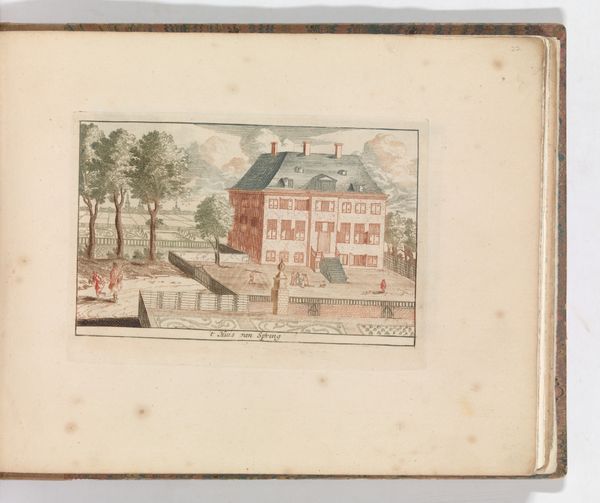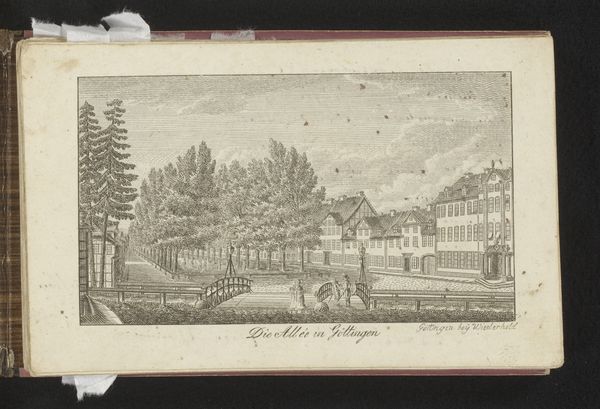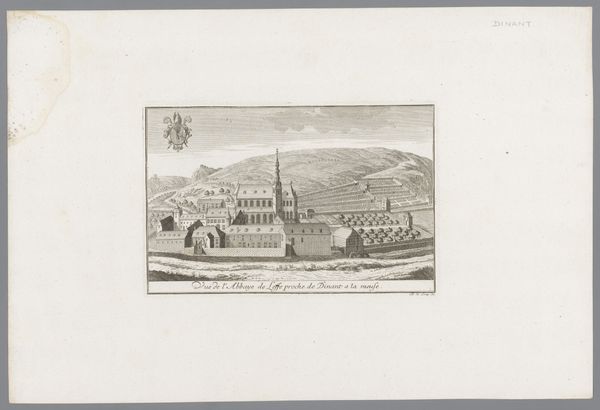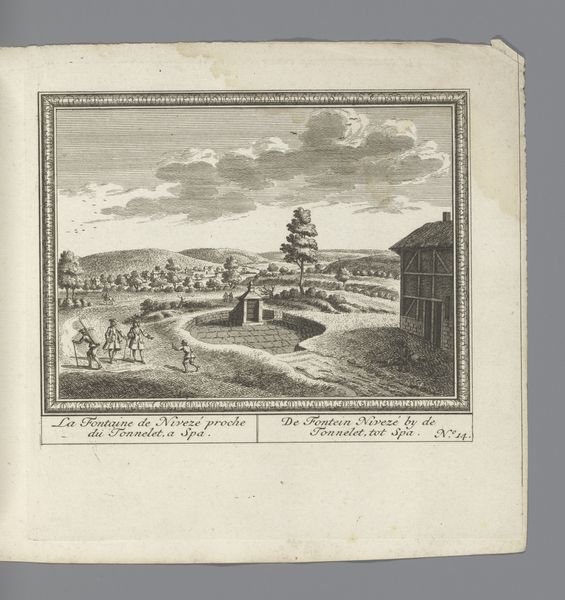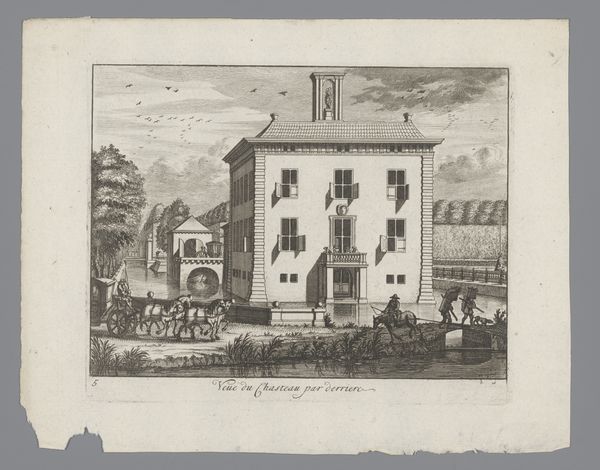
'Het Groote Doolhof', in: Tooneel Der Voornaamste Nederlands Huizen, En Lust Hoven, Naar T Leven Afgebeeld 1660 - 1693
0:00
0:00
drawing, print, etching, engraving
#
drawing
#
garden
#
baroque
# print
#
etching
#
book
#
landscape
#
men
#
genre-painting
#
italian-renaissance
#
engraving
Dimensions: Plate: 6 5/8 × 8 1/16 in. (16.8 × 20.4 cm)
Copyright: Public Domain
Editor: This is 'Het Groote Doolhof' by Carel Allard, made sometime between 1660 and 1693. It's a print, an etching and engraving. It’s got this beautifully rendered garden, populated with figures. I find myself wondering what purpose these grand gardens truly served, beyond mere aesthetics. What's your take? Curator: Well, viewing this through a historical lens, these elaborate gardens became powerful symbols of status and control during that period. Consider how carefully curated these spaces are; they aren’t just natural landscapes. They project an image of dominion over nature and, by extension, society. How do you think that control is reflected? Editor: I guess in the rigid symmetry and the almost stage-like setting? The figures almost seem to be performing for an audience, or for each other. Curator: Precisely! These weren't simply places for leisurely strolls. They served as settings for social and political display. These gardens become backdrops where alliances were forged and power was consolidated through extravagant gatherings and carefully managed interactions. Who do you imagine was excluded from these scenes? Editor: Probably most of the population. Looking closer, there seems to be only wealthy people who enjoyed the gardens, because they were the only ones portrayed here. The garden seems less like a green escape and more of a show. Curator: Exactly! So we are left with an artificial green area dedicated for performative gatherings and social climbing. What about the title; how does ‘The Great Labyrinth’ affect our interpretation of the garden space? Editor: Perhaps it highlights how even leisure activities of the elite are somehow labyrinthine and politically complicated. Curator: Yes, it seems like even the space itself participates in the convoluted hierarchy of 17th century nobility. That is quite a departure from simply "aesthetic," as you pointed out at first! Editor: Absolutely. It makes me see how constructed these spaces really were, designed not just for beauty but to reinforce existing social hierarchies. Thanks, that was insightful! Curator: Indeed, I think this analysis further exemplifies how social status during that time, can be explicitly illustrated in the medium of landscape design. Thank you!
Comments
No comments
Be the first to comment and join the conversation on the ultimate creative platform.
